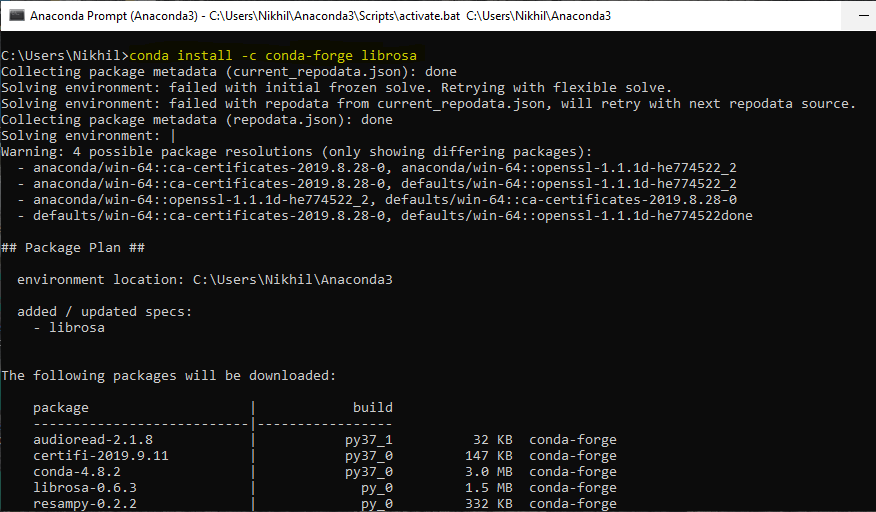



The JupyterLab server sends messages to your web browser.Installed the Anaconda Python distribution, see the setup instructionsĮven though JupyterLab is a web-based application, JupyterLab runs locally on your machine and JupyterLab is included as part of the Anaconda Python distribution. Reasonably up-to-date browser (ideally a current version of Chrome, Safari, or Firefox) InternetĮxplorer versions 9 and below are not supported.

JupyterLab is an application with a web-based user interface from Project Jupyter thatĮnables one to work with documents and activities such as Jupyter notebooks, text editors, terminals,Īnd even custom components in a flexible, integrated, and extensible manner. To tell a complete story of the analysis.Įach notebook contains one or more cells that contain code, text, or images.
#Open anaconda prompt code#
It allows you to display figures next to the code that produces them.To make it more accessible to you and your collaborators. It allows you to annotate your code with links, different sized text, bullets, etc.Tab complete allows you to easily access the names of things you are using.You can easily type, edit, and copy and paste blocks of code.While this is a common approach, we are going to use the Jupyter Notebook via JupyterLab for the remainder of this workshop. Text editor to create and edit their Python programs which can be executed through the IDE or command line directly.
#Open anaconda prompt software#
Many software developers will often use an integrated development environment (IDE) or a "ndaPath": "C:\\Anaconda3\\Scripts\\conda.Understand the difference between a Python script and a Jupyter notebook.Ĭreate and run Python cells in a notebook. # any other settings you have already added (remove this line) (click:) Preferences: Open Settings (JSON).To set anaconda prompt as your default terminal in VScode: py or launch a Powershell integrated terminal you should now see a message about "Loading personal and system profiles" and the Conda environment being prefixed on the terminal's prompt. open an Anaconda Prompt and run conda init powershell which will add Conda related startup to a Powershell profile.ps1 somewhere in your user's profile.from an Administrator Powershell prompt change the Powershell Execution Policy to remote signed i.e.
#Open anaconda prompt install#
For me on an "All Users" install this is C:\ProgramData\Anaconda\Scripts


 0 kommentar(er)
0 kommentar(er)
